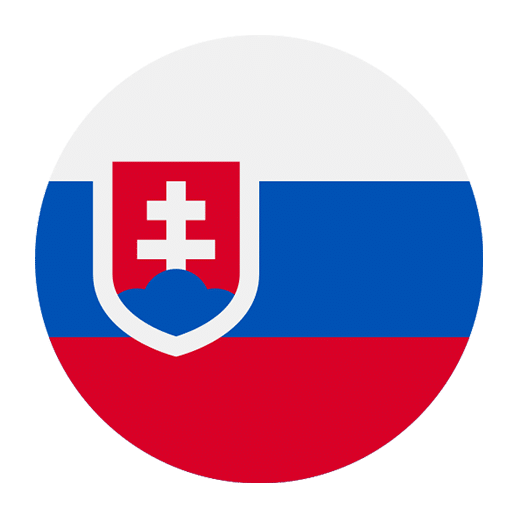Exploring a new language often opens the door to understanding various cultures better. Slovak, the official language of Slovakia, is no exception. Learning Slovak words to describe different cultures not only enriches your vocabulary but also enhances your appreciation for the diversity and uniqueness of different societies. In this article, we will delve into specific Slovak words and phrases that can be used to describe various cultures, their traditions, and their nuances.
Understanding the Basics
Before diving into specific words, it’s important to understand some basics. Slovak is a Slavic language, and like many Slavic languages, it is rich with descriptive terms that can capture the essence of different cultures. Here are a few foundational words:
– Kultúra (Culture): This is the Slovak word for “culture.” It encompasses the arts, customs, social institutions, and achievements of a particular nation or people.
– Tradícia (Tradition): Traditions are the customs and beliefs that are passed down through generations.
– Jazyk (Language): Language is a crucial part of any culture and is often a focal point when describing cultural attributes.
– Národ (Nation/People): This term is used to describe a group of people who share common cultural elements.
Words for Describing European Cultures
Europe is a continent rich in cultural diversity. Here are some Slovak words that describe various European cultures:
Western European Cultures
– Francúzska kultúra (French Culture): This term encompasses everything related to French customs, language, cuisine, and arts.
– Talianska kuchyňa (Italian Cuisine): Italian cuisine is famous worldwide, and this term is used to describe the culinary traditions of Italy.
– Nemecké umenie (German Art): Germany has a rich history of art, and this phrase captures its essence.
Eastern European Cultures
– Ruská literatúra (Russian Literature): Russia has produced some of the world’s greatest literary works, and this term is used to describe that body of work.
– Poľská hudba (Polish Music): Poland has a diverse musical heritage, from classical to folk music.
– Maďarská tradícia (Hungarian Tradition): Hungarian traditions include unique customs, dances, and festivals that are integral to their culture.
Words for Describing Asian Cultures
Asia is a vast continent with a rich tapestry of cultures. Here are some Slovak words that can be used to describe various Asian cultures:
East Asian Cultures
– Čínska filozofia (Chinese Philosophy): This term is used to describe the philosophical traditions of China, including Confucianism and Taoism.
– Japonská architektúra (Japanese Architecture): Japanese architecture is known for its simplicity, harmony with nature, and use of natural materials.
– Kórejský tanec (Korean Dance): Traditional Korean dance is an important part of Korean culture and is often performed during festivals and ceremonies.
South Asian Cultures
– Indická kuchyňa (Indian Cuisine): Indian cuisine is known for its diverse flavors, spices, and regional variations.
– Pakistanská móda (Pakistani Fashion): Pakistani fashion includes traditional clothing like shalwar kameez and modern styles.
– Nepálska mytológia (Nepalese Mythology): Nepalese mythology includes stories of gods, goddesses, and heroes that are integral to Nepal’s culture.
Words for Describing African Cultures
Africa is a continent with immense cultural diversity. Here are some Slovak words to describe various African cultures:
– Egyptská histórie (Egyptian History): Egyptian history is one of the oldest and most fascinating in the world, known for its ancient civilization.
– Nigérijská hudba (Nigerian Music): Nigeria has a rich musical heritage, from traditional drumming to modern Afrobeats.
– Keňská príroda (Kenyan Nature): Kenya is known for its stunning natural landscapes, including savannas and wildlife.
Words for Describing American Cultures
The Americas are home to a wide range of cultures. Here are some Slovak words to describe various cultures in the Americas:
North American Cultures
– Americký sen (American Dream): This term captures the ideals of freedom, success, and upward mobility that are central to American culture.
– Kanadská príroda (Canadian Nature): Canada is known for its vast, beautiful landscapes, from mountains to forests.
– Mexická kuchyňa (Mexican Cuisine): Mexican cuisine is famous for its rich flavors, use of spices, and traditional dishes like tacos and enchiladas.
South American Cultures
– Brazílska samba (Brazilian Samba): Samba is a lively, rhythmical dance that is an integral part of Brazilian culture.
– Argentínske tango (Argentinian Tango): Tango is a passionate dance that originated in Argentina and is a significant part of its cultural identity.
– Peruánska história (Peruvian History): Peru has a rich history, including the ancient Inca civilization and its impressive architectural achievements.
Words for Describing Oceanian Cultures
Oceania includes a diverse range of cultures, from indigenous traditions to modern influences. Here are some Slovak words to describe these cultures:
– Austrálska príroda (Australian Nature): Australia is known for its unique wildlife and natural landscapes, including the Outback and the Great Barrier Reef.
– Maorská kultúra (Maori Culture): The Maori are the indigenous people of New Zealand, known for their rich traditions, language, and art.
– Havajská hudba (Hawaiian Music): Hawaiian music includes traditional chants, songs, and modern influences that reflect the island’s culture.
Words for Describing Middle Eastern Cultures
The Middle East is a region with a rich cultural heritage. Here are some Slovak words to describe various Middle Eastern cultures:
– Arabská architektúra (Arab Architecture): Arab architecture is known for its intricate designs, use of geometric patterns, and historical significance.
– Perzská poézia (Persian Poetry): Persian poetry is one of the oldest forms of literature in the world, with poets like Rumi and Hafez being central figures.
– Turecká kuchyňa (Turkish Cuisine): Turkish cuisine is a rich fusion of flavors and traditions, including dishes like kebabs and baklava.
Words for Describing Indigenous Cultures
Indigenous cultures around the world have unique traditions and languages. Here are some Slovak words to describe these cultures:
– Inuitská kultúra (Inuit Culture): The Inuit are indigenous people living in the Arctic regions, known for their unique way of life and traditions.
– Aborigénska umenie (Aboriginal Art): Aboriginal art from Australia is known for its distinctive styles and cultural significance.
– Amazonka kmeňová tradícia (Amazonian Tribal Tradition): The indigenous tribes of the Amazon have rich traditions and ways of life that are deeply connected to the rainforest.
Words for Describing Cultural Elements
In addition to describing entire cultures, there are specific elements within cultures that can be described using Slovak words. Here are a few examples:
– Festival (Festival): Festivals are an important part of many cultures and are often celebrated with music, dance, and food.
– Rituál (Ritual): Rituals are ceremonies that are often performed for religious or cultural reasons.
– Oblečenie (Clothing): Traditional clothing is an important aspect of cultural identity and can vary greatly between different cultures.
– Hudba (Music): Music is a universal language that is an integral part of many cultures.
– Tanec (Dance): Dance is a form of expression that is deeply rooted in cultural traditions.
Practical Usage in Conversations
Understanding these words is one thing, but using them in conversations can bring your language skills to life. Here are a few sample sentences:
– Francúzska kultúra je známa svojou kuchyňou a umením. (French culture is known for its cuisine and art.)
– Japonská architektúra využíva prírodné materiály a harmóniu s prírodou. (Japanese architecture uses natural materials and harmony with nature.)
– Indická kuchyňa je plná chutí a korenín. (Indian cuisine is full of flavors and spices.)
– Argentínske tango je vášnivý tanec, ktorý má hlboké kultúrne korene. (Argentinian tango is a passionate dance with deep cultural roots.)
– Perzská poézia je známa svojou krásou a hlbokým významom. (Persian poetry is known for its beauty and deep meaning.)
Conclusion
Learning Slovak words for describing different cultures not only expands your linguistic abilities but also deepens your understanding and appreciation of the world’s diversity. By integrating these words into your vocabulary, you can have richer conversations, gain new perspectives, and foster a greater sense of connection with people from different cultural backgrounds. Whether you are describing the rich traditions of East Asia, the vibrant music of Africa, or the unique architecture of the Middle East, these Slovak words will help you articulate the beauty and complexity of the world’s cultures.

